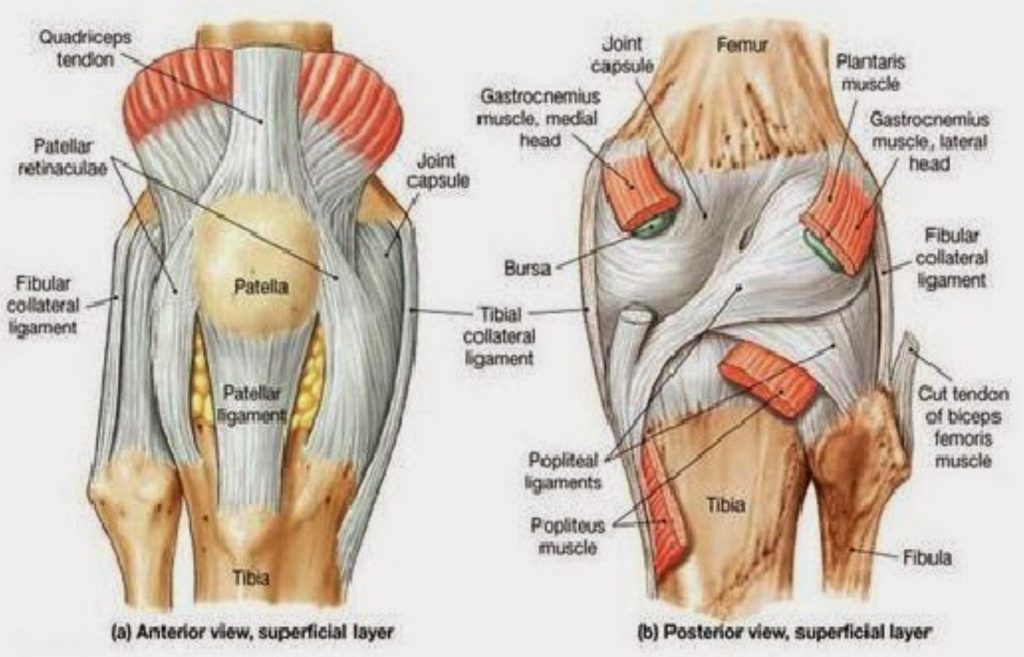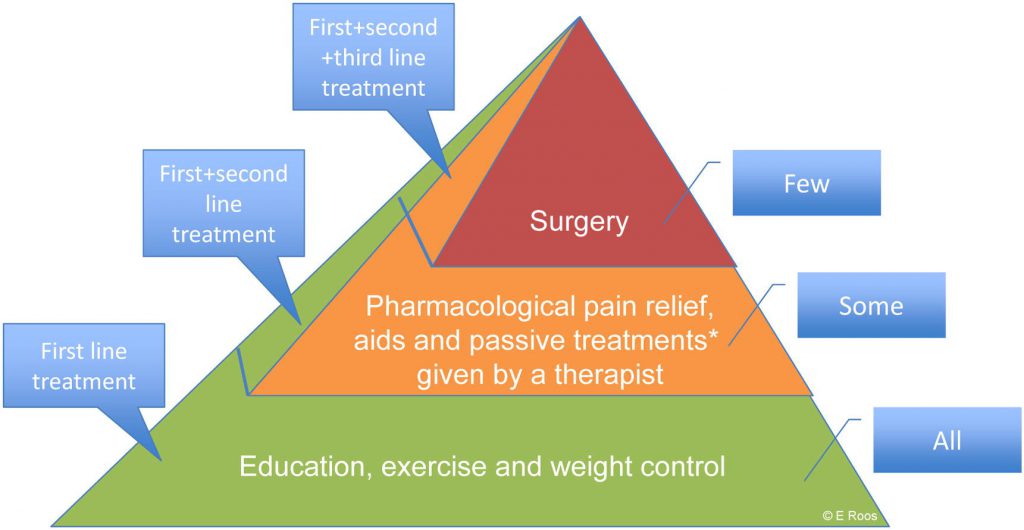Pain Behind the Knee: What Is It and How To Treat It?
Pain Behind the Knee: What Is It and How To Treat It?
The knee joint is categorised as a hinge joint that has the capacity to bend or flex, as well as having slight rotational components. This anatomical structure somewhat limits its Range of Motion, making it an inherently stable joint. This ‘stability that the knee joint possesses is what makes it so prone to injury [to see more about why, check out this video on the joint by joint approach]. Knee injuries are also one of the more severe musculoskeletal injuries associated with sport, being associated with lengthy recovery times. This is because when it comes to knee injury, there is often a large functional deficit in the body’s movement capacity that initially caused the injury. For the more serious knee injuries, we’re looking at surgeries, which will always have a pretty large recovery time associated.
To see more about the specifics of how our body may be lacking movement capacity, check out our video on ‘The Kinetic Chain’ below.
Because of this stability classification & our knees being the bearer of a lot of the force that we put through our body, it, unfortunately, is one of the more injury-prone areas of the body. This does not mean that it is a fragile joint, however. When we move well, our knee is a brilliant piece of architecture capable of doing amazing things. Despite this, when it comes to knee pain many are still puzzled as to what could cause knee pain behind the knee or what they call posterior knee pain. There are a number of different factors that contribute & today we’re going to provide a general guide for you to most effectively identify it.
Symptoms of Pain Behind Knee
The symptoms of pain behind the knee will help you to determine which specific injury you’re looking at. Here is a quick list of some of the more common symptoms to look out for.
- If you’re feeling a sharp, dull, or burning sensation, there is a possibility of an injury behind your knee. These symptoms may occur when you bend your knee, and it usually happens gradually or suddenly.
- You may also check if your knee is swollen. This can indicate that you have suffered from an acute injury or something else that needs immediate care.
- In some circumstances, redness or warmth behind your knee can also indicate inflammation in your joints. Typically this will accompany swelling.
The key with all of this is to remember, that these are simply symptoms that help us to diagnose what has happened. What’s more important over the long run however is determining what the root cause of that diagnosis was in the first place. What we find is that after we look at the causes of the specific injury causing the feeling of pain behind the knee, we’re able to identify a series of risk factors that contribute significantly to the likelihood of sustaining a knee injury.
What Can Cause Pain Behind the Knee
Here’s what you need to know about pain behind your knees.
Essentially, experiencing pain behind the knee is a generalised summary of a number of different potential causes that lead to a feeling of pain in the particular location of the back of the knee.
Firstly we should introduce which structures are most commonly being affected when we get pain at the back of the knee. When looking at the image of the knee below, we see the complex web of anatomical structures that comprise the knee. When referring specifically to the back of the knee, and pain being experienced there, we’re typically looking at damage & the associated swelling. With that said, however, there are a number of other symptoms that result from the various different presentations that can cause pain behind the knee. For the sake of best treatment outcomes, it’s best to categorise the most common causes of pain behind the knee into two categories: Acute & Chronic. To identify which is which for you, we recommend using our handy little Instagram post below.

A Look At The Structures of the Knee
View this post on Instagram
Acute Issues
Knee Hyperextension
When the knee joint bends backwards, beyond it’s normal range of motion, we sustain what’s known as a hyperextension. Due to the anatomical limitations of the knee, it doesn’t have a large capacity to resist hyperextension (when compared to the amount of force we can take through our knee). Most people will never experience this type of injury, as hyperextension is really only associated with extreme sporting or gym based activity. Common situations include an aggressive planting of the foot in sport with a straightened leg. The other situation where this type of injury is commonly seen is when using a leg press machine in the gym. This particular machine, when not used correctly can place a lot of force through the knee in its anatomical weak spot (i.e. full extension). While most people will use this machine & never have any issue (provided they adapt over time & aren’t stupid with their loading) caution is still necessary – This article explains further. Hyperextension often causes instability and at least some pain or discomfort towards the back of the knee, potentially being a potential cause to damage of the ACL, PCL, meniscus or the popliteal ligament.
Hamstring Strains
Hamstring strains are essentially when one of the 3 hamstring muscles are torn in some fashion. There are 3 grades of hamstring strain, which all vary greatly in their severity. For more specific information on hamstring strains check out this incredibly useful guide. Hamstring strains can be felt as pain behind the knee, based on where the strain is affecting. If it’s a low hamstring strain near the insertion of the muscle, close to the tendon, then this could be experienced as a dull ache or sharp pain at the sides of the knee. It can also be contributing to a feeling of tightness at the back of the knee.

The Hamstrings Attach to The Back of the Knee
Cartilage Tear/Meniscal Tear
A cartilage tear is one of the more common knee injuries that we sustain, being a major potential contributor to the experience of pain behind the knee. While the mechanism of this type of injury is usually a large twisting or pivoting motion that causes a lot of force to go through the knee, there are a range of factors that lead someone to be more likely to experience this particular injury. While we will cover these later, these are: Poor movement quality, lack of relative tissue tolerance & strength, cognitive state, genetic factors, overall acute loading. A lot of the information available on the internet will suggest that sporting activities will put someone at risk of sustaining this type of injury & while that is true, we think it’s worth noting that many athletes & sporting participants will never sustain this type of injury at all, especially those who address the key factors that lead to a greater likelihood of experiencing the injury.
Ligament Tear [e.g. ACL injury, MCL injury etc.]
Another example of what could cause knee pain behind the knee, ligament tears happen in a very similar way to cartilage tears (i.e. large twisting forces) and are associated with the knee having a large amount of force being applied at the outer ranges of the knee joint (i.e. extreme ranges of motion). Depending on the types of forces applied, certain structures will be more likely affected (see knee diagram above to get an idea of the different ligamentous structures of the knee. ACL injuries are one of the more common injuries associated with sport & can occur due to large rotational forces similar to a meniscal tear. They are one of the more common ligament injuries contributing to a feeling of pain behind the knees, creating a ‘swollen’ or tight feeling depending on the severity of the tear. We would also argue that the factors that often contribute to this type of injury are more chronic in nature (e.g. movement compensation, lack of strength, poor lifestyle habits).
Chronic Issues
Hamstring Tendonitis
Pain at the back of the knee can indicate Hamstring tendonitis. This will come about as a response to too much loading that our hamstring tissue is unable to recover from. It can take a period of weeks to develop & typically results from a sudden increase in activity. Pain is likely to be noticed after exercise & in more severe cases during the activity/ throughout the day.
Tight Popliteus
The popliteus is the muscle at the back of the knee that allows us to achieve the knee ‘lock’ feeling. It functions as our terminal knee extensor and is a crucial part of the knee’s functional anatomy. If we look at the diagram of the knee above, we will see that the popliteus is the muscle that crosses the knee joint at the back. When we experience a ‘straining’ across the back of our knee, this can be our popliteus. It is also tight from a lack of strength elsewhere in the lower limb.
Leg cramps or tightening of a muscle
If you feel a sudden, painful spasm near the knee or leg cramps, it can indicate a compensation that your body is making up for. The feeling of cramping is in most cases a lack of neurological control. Tightness is a similar phenomenon, where our body creates the tightness within a muscle to create stiffness & protect a joint that is perceived by the brain to be unstable [See more about this concept in this article].
Arthritis
Osteoarthritis wears down the cartilage of the joints related to a large number of complex factors. It can easily cause pain behind the knee, and people with arthritis have difficulty bending their knees and may feel stiffness or pain anywhere around the knee. This is the typical ‘stiff’ feeling that. If you’re concerned that your pain could be Osteoarthritis, we strongly recommend you check out our comprehensive article, which will tell you everything you will ever need to know about the condition. There are a lot of myths about arthritis in our culture and this article will set them all straight for you, giving you the information you need to not be affected by it at any stage of your life.
Pain and swelling from Baker’s Cyst
If you see a fluid-filled sac that forms behind your knee, it is often caused by Baker’s Cyst. If it gets worse and the cyst bursts, you’ll feel a sharp pain around the knee. Injury or stress from arthritis can also trigger the growth of the fluid.
But What Caused All Of These Issues In The First Place [And More Importantly, What Can I Do About It]?
With the vast majority of acute & chronic issues, it’s worth playing devil’s advocate & really diving deep into asking: what actually caused the issue in the first place? In the large majority of cases, there was a series of underlying factors that set the individual up towards experiencing their acute issue in the first place.
Take the example of the meniscal tear. More often than not, there are a whole host of factors that go into the injury occuring. We’ve come up with a shortlist of some of the common factors below.
- Poor Movement (Mobility, Stability, Motor Control) – Movement Hierarchy.
- Lack of relative tissue tolerance & strength (bodyweight, adaptation).
- Genetic factors.
- Acute loading increases.
- Motor Affects – reaction timing off, physical fatigue/ overtraining, playing when tired or concussed to slow down reaction time etc.
This is simply a shortlist of some of the key factors that we see going into someone experiencing an injury.
The bottom line is that in almost all cases, when someone comes to us with an injury their movement was not as good as it could have been, they didn’t have the tissue strength to tolerate the activity they were doing & overall they had a lot of room to improve the way they moved.
If most people took this into consideration, found themselves a movement practice they enjoyed (if you’re struggling to find activities you love in your area, try our activity partner PlaySport) & focused on improving the way they move then injury would never be a problem.
That’s why we tend to focus more on how a condition functionally presents. If you’ve been noticing pain behind the knee for a period of longer than 4 weeks, it can be useful to go through a functional movement assessment to determine if your strength & function could be contributing to your issue. Here’s a video to help you assess the key aspects of your function that contribute to knee pain: How to Assess Your Own Knee Pain
How to Treat Pain Behind the Knee
Best Long Term Strategy
- Move well, pass our knee function assessment test. If still experiencing pain, speak to a professional.
- Pay attention to load management. Back of your exercise to a level where you don’t notice any pain. Walking is a great place to start.
- Regularly exercise & train. The benefits are too great. Use it or lose it. If you aren’t exercising at least 3x per week & are experiencing knee pain, then this is likely to be a big contributor. Make sure you get in the gym & do some form of strength training.
- Understand why we get injured in the first place. By identifying that our body is likely to experience movement-compensation as a function of the way most of us lives our lives, we can put ourselves in a great position to avoid injury for the rest of our life.
Seek Help From First Order Intervention, Allied Health Professionals
The various issues that cause pain behind the knee are best treated by first-order health care professionals, such as physiotherapists. This is the recommended course of treatment, as per the best available evidence-based on the value of care that allied health can provide. If you find that exercise, lifestyle modification & addressing the key factors we’ve outlined above doesn’t resolve your issue, only then would it be recommended that you seek the advice of a specialist & other passive forms of treatment.
For over 10 years of clinical practice at MTP Health, we have a unique approach to address any pain and dysfunction by looking at how your entire body moves, as opposed to simply addressing what could cause pain behind your knee.
We focus on an exercise program created for your specific needs. This is incredibly important for how we like to teach things, as we really focus on empowering the people we work with to be able to manage their own condition when they leave us. This helps you get to resolving your issue ASAP, putting you on the right track towards moving with pain-free knees.

First Order Interventions Are What We Focus on At MTP to A World-Class Standard
